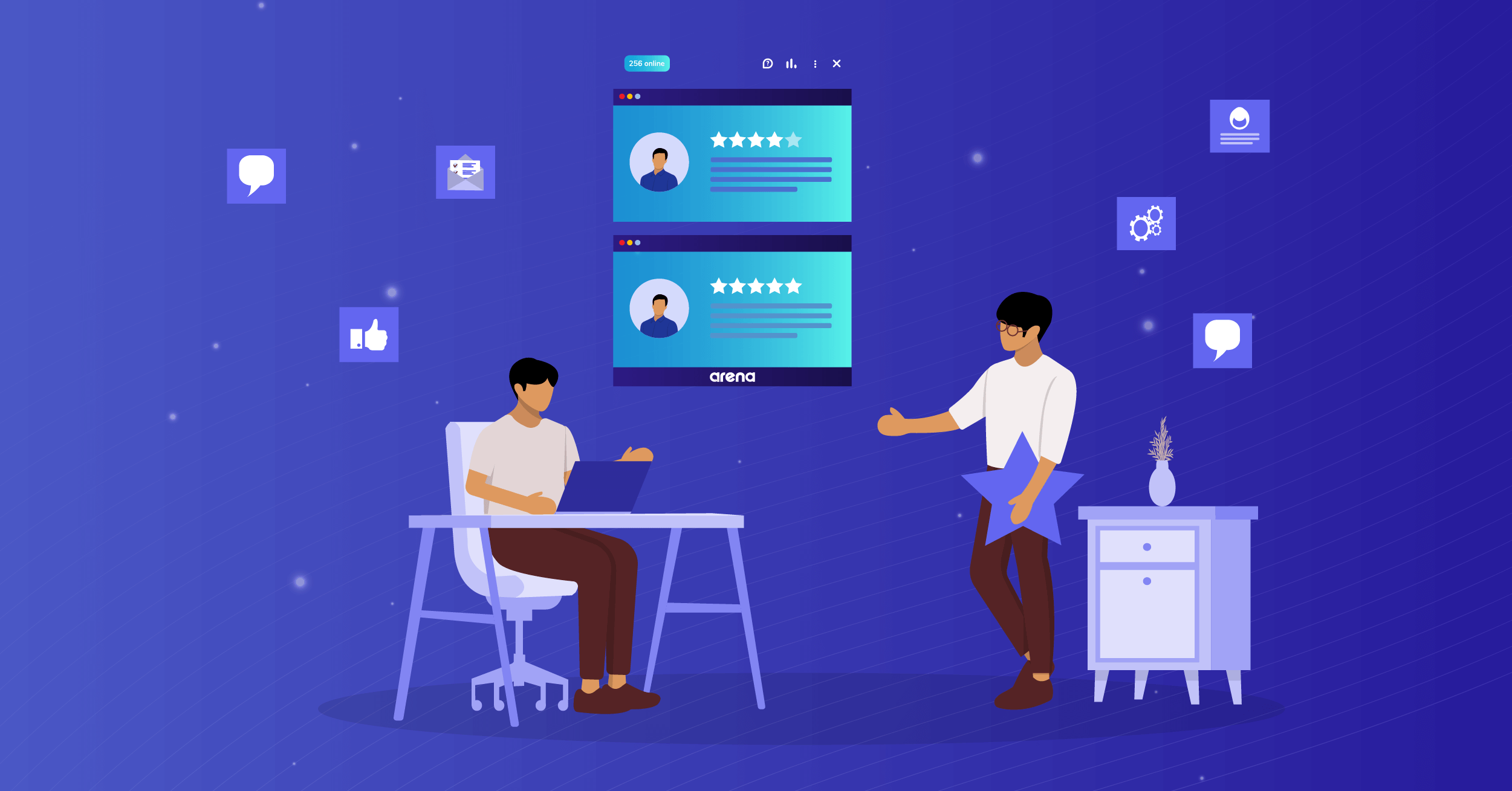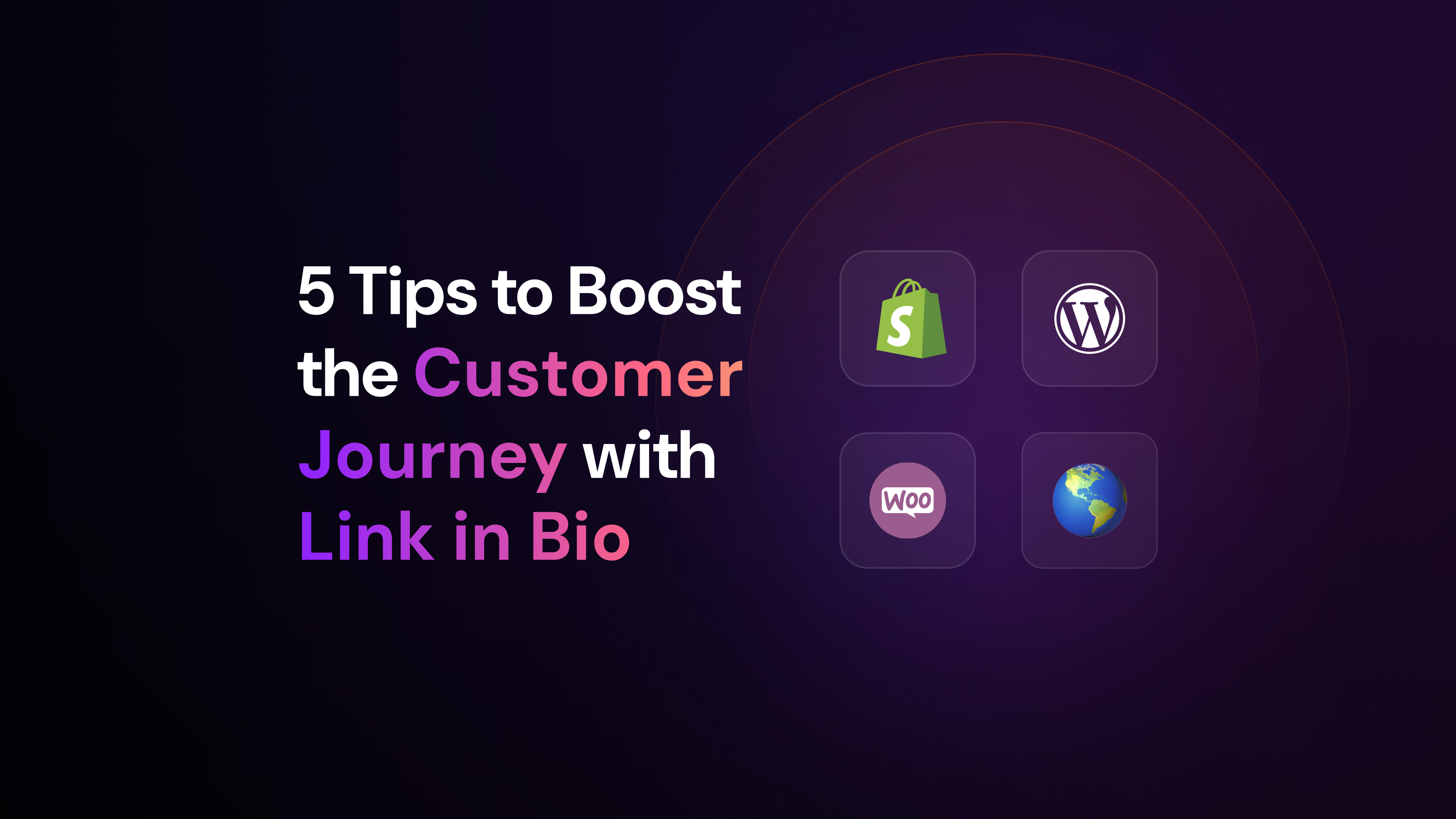Do you ever feel like your company could have an upgrade in Customer Service? Or that you could sell more and drive more engagement if Customer Experience was a little better on your website? Trust me, this feeling is more common than you would expect.
Companies might have good services and products, but the truth is “good” is not enough in today’s competitive scenario. Most brands rely on standardized approaches and interactions that are impersonal and time-consuming both for your customers and Customer Support agents.
Think about the “love brands” worldwide: Amazon, Apple…you name it. They all have great Customer Experience (CX) and go beyond the basics in customer support. Actually, most of them offer one thing in common: Live Chat.
Live Chat can be used across many steps in the Customer Experience, whether to answer questions about products and services or to assist customers after a purchase. Another trend is to use Live Chat proactively to display personalized messages and offers while the customer is browsing.
In this post, you will learn all about Live Chat and how to use it to drive customer loyalty and more business results.
What is Live Chat?
You probably might have bumped into Live Chat on websites before. Live Chat is a messaging tool strategically designed for Customer Experience in real-time. It is usually placed in the Customer Support section or as a discrete pop-up button that shows up while you’re browsing.
Some people might confuse Live Chat with a Chatbot, but there is a slight difference between them. While Chatbots work only with automated answers, Live Chat is a tool used by human agents instead.
Some Live Chat sessions can start with automated messages, like greetings and basic introductory questions, but then the customer is routed to an actual human professional.
Live Chat can serve many purposes, from Customer Support to Sales and Marketing. The classic way of using it is in Customer Service, where the approach is mostly reactive. That means the Customer starts the conversation in order to solve some problem.
Live Chat can also be used for cross-selling and retargeting tactics in a proactive way – when your agents start the conversation, not the customer.
Why should you pay attention to Live Chat software?
Live Chat has become the new standard in Customer Service, and companies from all segments have relied on it to provide high-level engagement and humanized interactions with customers. From e-commerce to media brands, Live Chat offers the possibility to optimize companies’ communication channels and improve customer experience (CX) altogether.
Think about your company. It is likely your brand has multiple direct and indirect Customer Service touchpoints, from email to social media, for example. Sometimes it might be hard to manage requests coming from different places in a fast, efficient way.
Live Chat can be a cure for this pain point and act as a hub for customers, allowing them to solve doubts and requests quickly without having to leave to other channels. From a business standpoint, Live Chat can help you give life to omnichannel strategies and optimize service costs.
Imagine answering (and solving!) customer requests in a single chat session with Live Chat, with no more back and forth emails and lengthy calls. Trust me, your support agents and customers will thank you!
What about the outcomes of adopting Live Chat? You can expect an increase in support team productivity and Net Promoter Score (NPS) — which ultimately means more customer loyalty and good referrals.
Other benefits of Live Chat include:
Non-intrusive communication
Live Chat allows your brand to be available 24/7 in a non-intrusive way, once the customer can call out for an agent whenever he needs without being flooded by emails and phone calls.
Personalization
Personalized messages are key if you want to engage customers and surpass their expectations. With Live Chat, you can serve a more personal approach instead of serving customers with standard and automated messages. In fact, research shows that people prefer to talk to real human agents instead of chatbots.
By integrating Live chat with other platforms, such as CRM and Customer Data Platforms, your support team can know the customer’s name, buying history, and more! With that type of information in mind, it gets much easier to personalize messages and fasten problem resolution.
Productivity
Do you want to offer top-notch customer support and still make customer service more efficient? Live Chat is the perfect tool for that. To get an idea, a Live Chat attendant can handle 6x more customers at once compared to a phone agent.
Some brands take this optimization to the next level and categorize Live Chat options for different types of customer issues, just so the customer is routed to the right agent before the conversation even starts. We’ll show you a few use cases later on in this post.
Customer Support and Live Chat: statistics behind this combination
If you are considering a Live Chat tool for your company, you probably want to quantify the type of results you can get from it. You will need to justify the investment to your boss, after all.
We have gathered some data that clarifies the potential of Live Chat for your business and customer experience:
- While e-mails get 61% of customers satisfied with Customer Service, and phone calls get 44%, Live Chat gets up to 73% of customers satisfied.
- 63% of customers said they are more likely to return to a website if Live Chat is available.
- 83.1% is the average customer satisfaction rate globally with Live Chat.
- When asked about what made them happy in Live Chat support, 79% of customers said they like this type of support channel because of the real-time component, while 51% said it was because they can multitask while talking to the support agent.
Live Chat Examples
There are many examples of companies that are using Live Chat in a creative way. Some are more sophisticated and others are simpler, but all serve the same purpose: improve customer experience and customer service. Let’s look at a few successful cases below:
Facebook Messenger
Facebook Messenger’s plugin is perhaps one of the most common Live Chat integrations for businesses. It was launched in 2017 as a way to connect brands to their customers via Messenger, which is widely used by the audience.
By opting in via their Facebook account, customers can ask questions and communicate with brands, without having to reach out via the company’s website. Facebook’s plugin, along with tools like WhatsApp Business, aligns with Facebook’s strategy to provide more and more services dedicated to corporate communication management.
Facebook Messenger’s integration can represent an important source of insights for companies, and even a good channel to start Customer Service procedures. The bad news is that the plugin’s interface is very basic and doesn’t allow much personalization from CX managers.
Besides, your company cannot let multiple agents work from the same Facebook account, use response templates, or assign a conversation to the most suitable support agent in your team. While Facebook Messenger can be a great tool to start a conversation, you can take better advantage of it by combining it to more complete, integrated Live Chat tools.
Amazon’s Live Chat
Amazon is certainly one of the global benchmarks when it comes to Customer Experience and Support. It embodies the “customer-centric” mindset, and Amazon’s Live Chat reflects that as well. It is no coincidence Amazon has one of the best customer service ratings in the industry.
The company offers a variety of support options: customers can browse through FAQs lists about popular topics, quick solutions, and a community forum. That is very helpful not to waste agents’ time with common questions that are easy to solve in a self-service model.
Then, if customers can’t find the answer to their doubts in Amazon’s knowledge base, they can reach out to a real person via Live Chat.
Users are routed to support specialists according to different request categories. How it works:
the customer can choose the topic he wants to chat about (memberships and subscriptions, ordering and shopping preferences, Login & Security, etc) before being redirected to a specialized agent.
By narrowing down the customer’s case, Amazon optimizes Live Chat sessions and agents can go straight to the point in the conversation, improving the overall customer experience. The combination of real-time service and FAQs provides a great balance, just so the customer can solve simple doubts on his own and reach out to human agents for more complex issues.
Apple’s Live Chat
Known for its great service design, Apple is also on the list of companies that use Live Chat for Customer Service. On Apple’s Support Page, the user can choose the product or service he is having issues with.
From there, the customer can choose to talk via phone or Live Chat to an Apple expert who specializes in their exact area of request. Everything happens within Apple’s website, so the customer doesn’t have to send requests through other channels and wait too long to solve their problems.
That’s a great example of how intuitive and specific Live Chat can be, helping solve customers’ unique needs in a convenient way.
Arena’s Live Chat: why you should test it to enhance your Customer Experience strategy
After showing a few use cases to inspire you, let me introduce you to Arena’s Live Chat, one of the most complete tools in the market. It might be difficult to choose a Live Chat tool that best suits your needs, but Arena has a flexible and intuitive enough to help any company, no matter the size and complexity.
Let’s explore some of Arena’s Live Chat features:
- Multifunctional Live Chat
Our Live Chat tool can be used in different formats to better suit your engagement strategy. Arena offers the classic one-on-one Live Chat tool, used in Customer Support and proactive Sales, but also a Live Group Chat tool that can be used for specific events or permanent discussions, like a community forum.
If your brand generates proprietary content, for instance, it can use Live Group Chat to engage audiences in blogs and Live Blog pages, for instance.
- Simple Setup
Setting up Arena a Live Chat tool is super simple, all you have to do is paste a line of code on your website to embed it to your page. Our tool also works both on desktop and mobile pages, including Google AMP, and supports more than 17 languages.
- Scalable
Arena’s Live Chat can help you handle Customer Service no matter the scale of your company. Our enterprise-grade platform will handle chatrooms with thousands of hundreds of concurrent users, so your support team doesn’t have to worry about the stability and availability of the program.
- Customizable
Our tool allows you to choose where you want the Live Chat to be displayed on your website, and also customize it to match your brand’s identity and design.
- Social Features
Unlike other cold Live Chat tools, Arena’s Live Chat tools are somewhat similar to messaging apps customers are used to. It has social features to make communication between your agents and customers more dynamic and personal, such as emojis and avatars.
- Control Dashboard
Our Live Chat tool offers a complete dashboard to help your team control chat rooms. With such a dashboard, your agents can see which customers are online, moderate, and delete messages if they need to.
Try a free live chat now
If you think it is time to adopt Live Chat support in your company, why not start with Arena? The best part is that you can try our Live Chat tool for free! Click here to access our free trial and upgrade Customer Service in your business.



